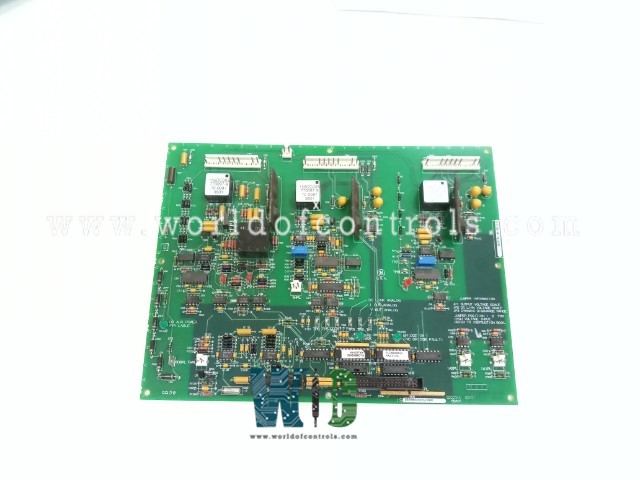
World Of Controls understands the criticality of your requirement and works towards reducing the lead time as much as possible.
IS200GDDDG1AAA - Gate Driver and Dynamic Discharge Board is available in stock which ships the same day.
IS200GDDDG1AAA - Gate Driver and Dynamic Discharge Board comes in UNUSED as well as REBUILT condition.
To avail our best deals for IS200GDDDG1AAA - Gate Driver and Dynamic Discharge Board, contact us and we will get back to you within 24 hours.
SPECIFICATIONS:
Part Number: IS200GDDDG1AAA
Manufacturer: General Electric
Series: EX2000
Product Type: Gate Driver and Dynamic Discharge Board
Number of channels: 12
Input span: 4-20 mA
Technology: Surface Mount
Common Mode Voltage Range: ±5 V
Maximum Lead Resistance: 15Ω
Analog output current: 0-20 mA
Operating temperature: -30 to 65 °C
Size: 8.26 cm high x 4.19 cm
Repair: 3-7 Day
Availability: In Stock
Country of Origin: United States
Manual: GEI-100241
FUNCTIONAL DESCRIPTION:
IS200GDDDG1AAA is a Gate Driver and Dynamic Discharge Board manufactured and designed by General Electric as part of the EX2000 Series used in GE Excitation Control Systems. The IS200GDDD Gate Driver and Dynamic Discharge board provide the interface isolation between the IGBTs and the main processor firing circuits of the EX2000 PWM-based exciter. Dynamic discharge circuit control is implemented on the GDDD board as well as the gating circuits for the A-leg and B-leg active IGBTs. The board also provides the instrumentation of the EX2000 PWM. Output dc voltage, dc-link voltage, shunt current mv input, and the heat sink thermistor input are processed on the GDDD board and sent to the LDCC processors for use by the regulators.
Three jumpers, JP1–JP3, on the GDDD board are used to configure the following components:
TEST POINTS:
WOC has the largest stock of GE Excitation Control System Replacement Parts. We can also repair your faulty boards. WORLD OF CONTROLS can also supply unused and rebuilt backed-up with a warranty. Our team of experts is available round the clock to support your OEM needs. Our team of experts at WOC is happy to assist you with any of your automation requirements. For pricing and availability on any parts and repairs, kindly get in touch with our team by phone or email.
What is a gate driver?
A gate driver is a device used to control the switching of power semiconductor devices such as MOSFETs or IGBTs. It ensures that the devices switch on and off efficiently and reliably by providing the necessary voltage and current levels to the gate of the semiconductor.
Why is a gate driver important?
Gate drivers are essential for power electronics applications as they enable precise control over the switching characteristics of semiconductor devices. Proper gate driving ensures efficient operation, minimizes power losses, and enhances overall system reliability.
When should I consider using a dynamic discharge board?
A dynamic discharge board is particularly beneficial in high-frequency switching applications or when minimizing switching losses is critical. It is often used in applications such as motor drives, power inverters, and renewable energy systems.